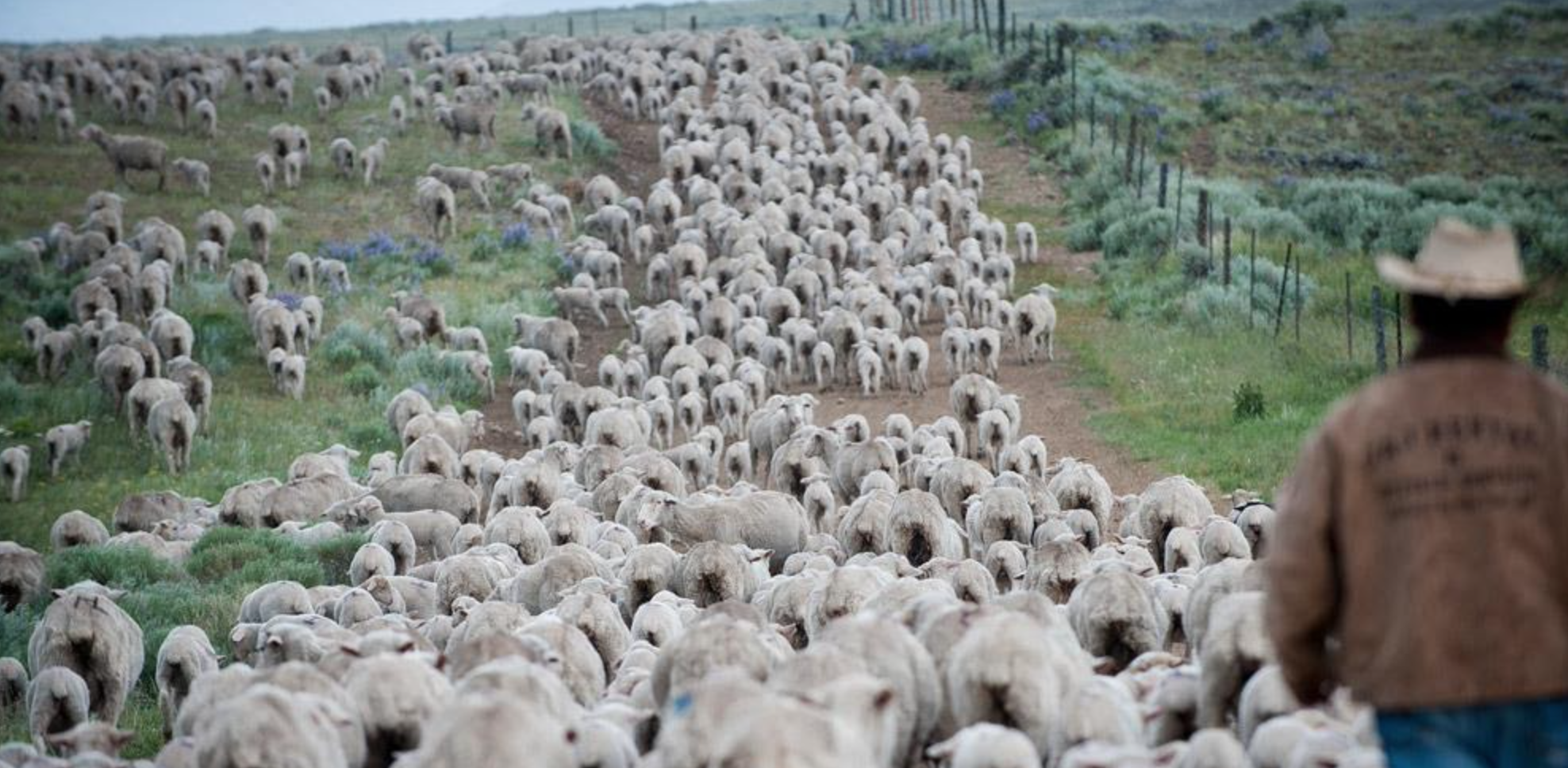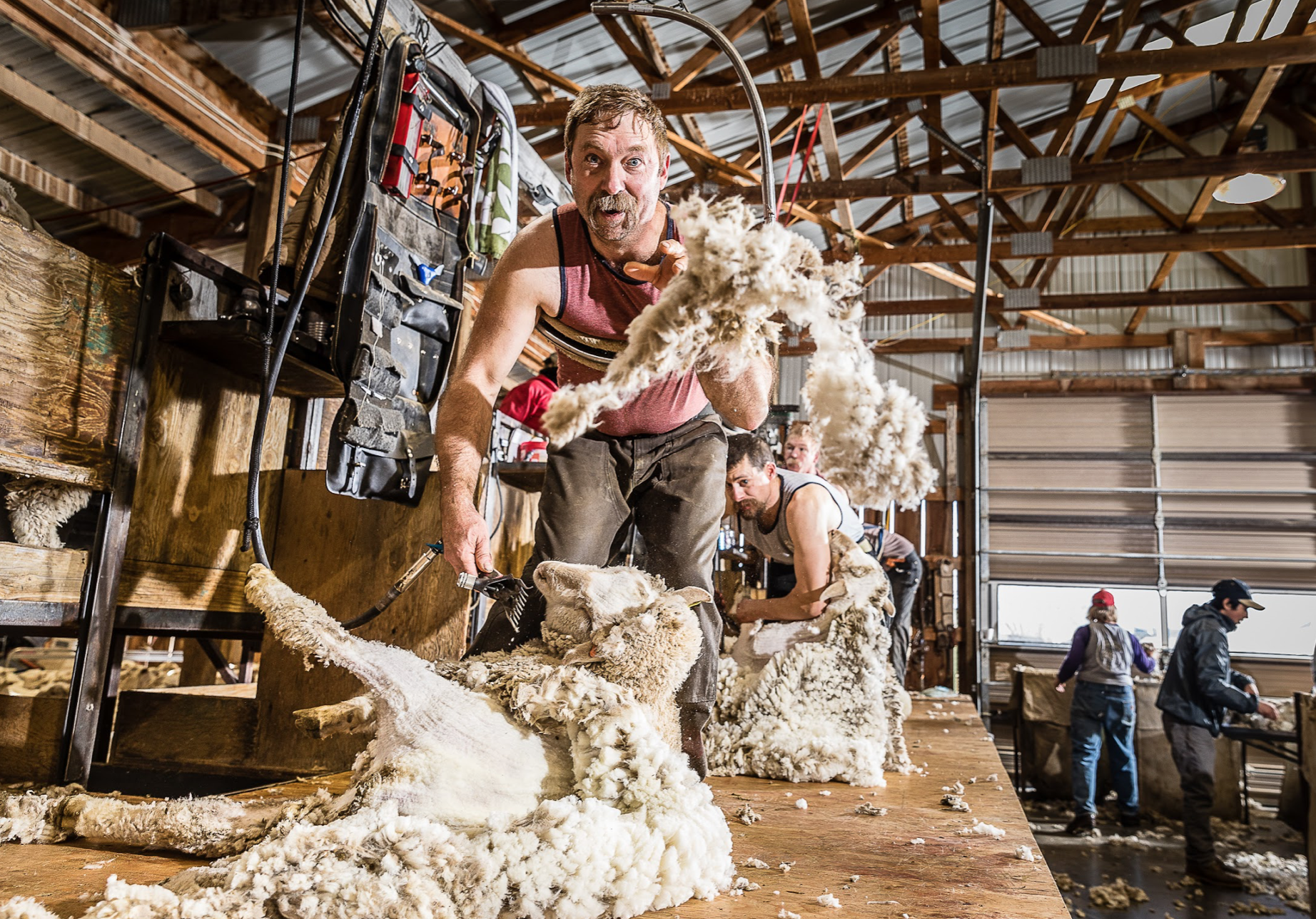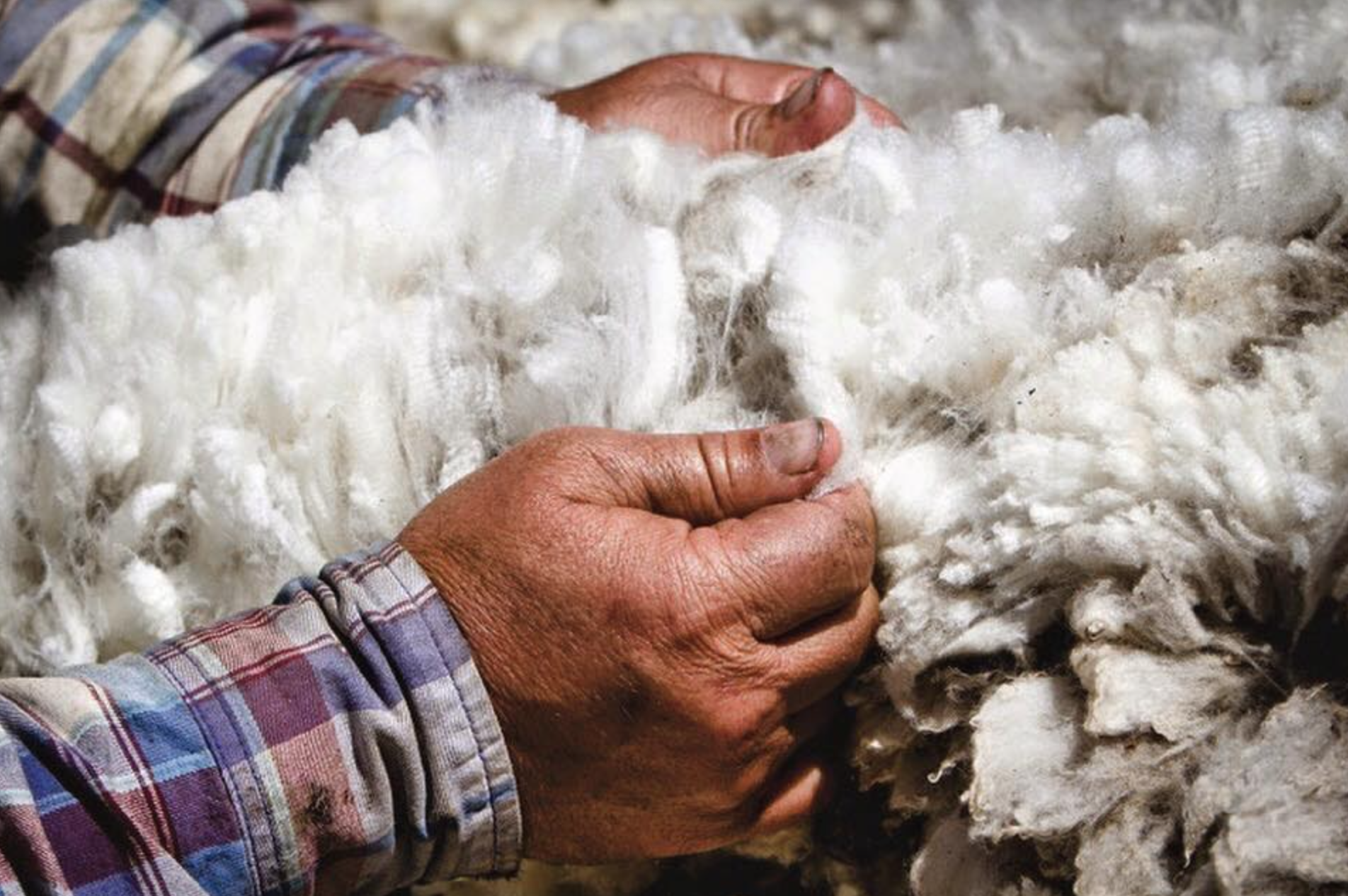Helle Rambouillet and Duckworth Clothing
A New Spin on Wool
Written by Cyd Hoefle
Photography contributed by Helle Ranch and Duckworth Clothing
“The most important job I have right now is continuing to educate consumers,” Evan Helle said. “There’s a multibillion-dollar industry out there trying to replicate the attributes that wool has and they can’t do it.”
Evan was speaking about the outdoor clothing industry and the companies that cater to the outdoor recreationists. He was also explaining how his family’s clothing company, Duckworth, came to be.
“There’s a lot of synthetics out there that claim to do everything that wool already does,” he continued. “So why not stay with a natural fiber that doesn’t have to be altered?”
The romance of the story is that just over seven years ago, Evan’s father, John Helle, and Robert “Bernie” Bernthal, a renowned clothing manufacturer, hatched the idea of using Helle wool from the Helle Rambouillet flock to come up with a line of wool clothing that would give consumers 100 percent American-made and -sourced clothing. The men struck a deal while skiing on nearby Maverick Mountain as they shared a chairlift.
Today the quality of the clothing company’s products is comparable to that of companies like Patagonia, Woolrich, Pendleton and North Face. And all of Duckworth’s top-of-the-line clothing is made from the wool shorn from sheep raised on the hillsides of the Helle Ranch near Dillon.
According to the company’s website, Duckworth is the only Merino wool clothing company that uses source-verified, 100 percent made-in-the-U.S.A. materials, with total supply-chain control from the fiber to the finished garment. It’s a process that takes up to two years to complete.
Evan said their clothing line is known for its moisture-wicking, quick-drying, breathable fabrics, which don’t require washing after every use and is popular with outdoor enthusiasts and ranchers alike.
Evan was 21 and had just graduated from Montana State University when he started with Duckworth. Tasked with figuring out how a Montana ranch family could leap from raising sheep to manufacturing clothing, it was an opportunity to put his agricultural business and economic degrees to work.
The next seven years would prove to be the most challenging ever while the young man partnered his education and sheep ranching background with Bernie’s expertise. They also worked with production expert Graham Stewart, described by Evan as a textile genius. Together the men scoured the states knocking on the doors of closed mills across the south, working to figure out how to get the fleeces made into clothing. It took time, perseverance and lots of research.
“The most important job I have right now is continuing to educate consumers. There’s a multibillion-dollar industry out there trying to replicate the attributes that wool has and they can’t do it.”
“Success in agriculture comes by not staying stuck in a rut,” John Helle said. “If it isn’t working you have to pivot and figure out something different.”
That line of thinking stretches back several generations to the first family members who emigrated from Austria to the Big Sky Country. Beaverhead County is well known as cattle country, but in the late 1800s, there were over 400,000 sheep grazing the hillsides. The county was the largest exporter of wool in the country.
The family folklore is that brothers George and Pete Rebish’s parents missed their passage on the Titanic and a later ship delivered them to America. They headed to Butte to work in the mines, but the lifestyle didn’t fit them. Settling in the Dillon area in the early 1900s, they partnered up to buy a small band of sheep and some land and then struggled through the Depression and Dust Bowl, foreclosures and misfortunes but somehow always figured out how to land on their feet and push forward.
John is the third generation of his family to be on the ranch and Evan makes the fourth. Each generation has brought something innovative to the ranch to help it to remain not only sustainable but growing and flourishing.
Joe Helle, John’s father, worked for the Forest Service as a ranger. Joe spent two years in the Korean War and upon his return home, graduated with a master’s degree in range science. He married Agnes Rebish, daughter of Pete Rebish, and when the young couple started their family, they moved to the ranch and Joe began farming.
“Back then the river wasn’t a reliable source for irrigating,” John explained. “My grandfather was instrumental in getting the East Bench Irrigation Canal and the Clark Canyon Dam built.”
The East Bench Irrigation project was started so that landowners would have access to water from the nearby reservoirs to help them irrigate their farmland. The completion of the project brought water to over 40,000 acres of cropland.
Irrigation meant that area farmers could increase their crop production exponentially. The Helles acquired more land and turned it into hay fields. Joe’s expertise in range management allowed them to successfully grow enough feed to take care of the sheep they were raising. As the years passed, the land, the sheep and the family all continued to grow.
Three generations later, John and his brother, Tom, contributed to the growth. By the time the brothers graduated, the band was about 1,000 strong and supported three families. Tom’s interests was with farming while John’s degrees in animal science, ag business and economics launched his interest in the genetics and breeding program. He recognized the durability of the sheep that came from the ranch with their adaptability to the environment and range conditions.
“Being good stewards of the land is something that has been passed down from generation to generation,” John said. “In order to stay sustainable, we needed to do a better job of breeding, lambing and grazing.”
Part of that came with the acquisition of Forest Service permits. The Helles trail their Rambouillets 50 miles into the Gravelly Mountains each year and they stay there from July until October. It’s a godsend for the family, who currently have five sheepherders tending a herd that now numbers 5,000 head. It’s been a great partnership with the Forest Service as well. Using targeted grazing, sheep graze down noxious weeds, helping to control them and allowing natural grasses to grow. They also keep overgrowth from becoming a fire danger.
John researched his family’s sheep genetics knowing how hardy the bloodlines were.
“We raise range sheep,” he said. “In fact, the genetics of the sheep that my grandfather started had the kind of genetics that we still needed to survive in the winters and range around Dillon. When I started keeping track of production records it was important to me that we keep with those same genetics.”
“Every generation has brought something innovative back to the ranch. Nothing in agriculture is easy, but we’re up to the task.”
- JOHN HELLE
Over the next couple of decades, the popularity of the Helle Rambouillets increased with sheep ranchers across the country, who have integrated them into their own herds. Today, the Helles sell 2,000 breeding ewes and 100 rams every year.
But even with the increased success of the sheep’s genetics program and with more Helles hoping to return to the ranch, John looked for additional ways to sustain the family. Wool became his next target.
Rambouillets are known for their Merino wool. With the quantitative genetics came a higher quality, finer wool. The Merino wool from the Helle sheep is fine, soft and smooth next to skin and the naturally long fibers give it strength.
When Evan stepped in, he was in a perfect position to help figure out how to use the Helle wool in the production of the clothing line. Working with a great team, Duckworth came up with the marketing model, “Sheep to Shelf.”
Using data gathered by technology that measures the fibers in each fleece helped the Helles selectively breed the itchiness out of their fleece. Using their own fleece in the production of their own clothing line put them in a unique position to be the only clothing manufacturing company in America that can boast having a hand in, and control of, every step it takes to turn their wool into clothing.
“There’s just something really satisfying when we see the end product that comes from our work,” Evan said. Today, the Duckworth line is offered almost exclusively online.
“When the coronavirus hit, many of our outlets ended up closing down. We had to figure out quickly what we needed to do to stay relevant,” Evan said. “We had to adjust our marketing plan and keep our product out there.”
Online sales have been promoted and now Duckworth ships all its products from a warehouse in Montana to its customers.
Both John and Evan know that there will always be difficulties making a living in agriculture. But with each generation adding a new dimension and working together toward sustainability, they believe they will survive.
“Every generation has brought something innovative back to the ranch,” John said. “Nothing in agriculture is easy, but we’re up to the task.”





